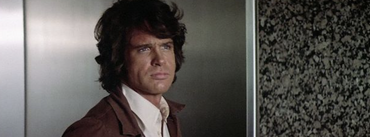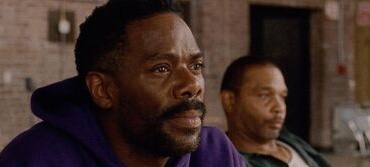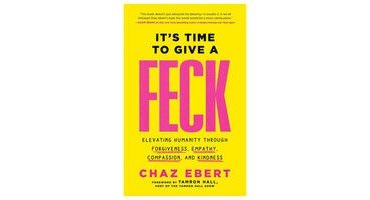
[Ominous announcer voice:]
“This is a video about the 1974 motion picture ‘The Parallax View,’ featuring a discussion of the film by Matt Zoller Seitz and ‘Mr. Robot’ creator Sam Esmail, edited by Nelson Carvajal. This video analyzes the entire movie, its script, editing style, cinematography, and themes, and the genre of the paranoid thriller that it’s part of. It should be viewed after watching ‘The Parallax View,’ not before.”
“This concludes our warning. If you have accepted the terms under which this video is being presented, press play now.”
[LIGHTS DIM; VIDEO STARTS PLAYING]
Many of my favorite films have endings that most people would consider unhappy. But I don’t. To me, the only ending that makes me unhappy is the wrong ending. “The Parallax View,” the 1974 paranoid thriller starring Warren Beatty as a renegade reporter investigating the murder of a United States senator, has the right ending for the story it presents—the kind of ending that fills you with dread and despair, but might also make you laugh (bitterly, and with admiration) at its audacity.
The beginning and middle of the film are great, too. And right around the halfway point is a montage that I consider one of the finest demonstrations of the essence of film editing since the Russians of the 1920s stitched unrelated shots together to see if it alchemized feelings and meanings the shots could not convey in isolation.
Beatty’s character, Joe Frady, is a recovering alcoholic with anti-authoritarian tendencies. He lost his job as an investigative reporter at a Seattle newspaper and only recently got it back, but is now in danger of losing it again. It is implied, not directly stated, that part of Joe’s problem is that he’s traumatized by the events in the film’s opening sequence, the assassination of the Senator during a party in the restaurant atop the Space Needle. (It’s staged to evoke the assassination of Robert F. Kennedy in Los Angeles six years earlier, as well as the killings of JFK, MLK, Malcolm X, and other leaders.) Everybody in the film’s potential audience was traumatized by the instability of that era. “Parallax” spoke to some of the worst of it.
This was a time when, paraphrasing one of Joe’s lines, it seemed as if every time you turned around, somebody was knocking off a leader or trying to. Two years before “The Parallax View” came out, President Richard Nixon survived two assassination attempts, one of which ended with would-be murderer Arthur Bremer wounding independent presidential candidate George Wallace. A month after “Parallax” came out, a disturbed man named Samuel Byck tried to kill Nixon by hijacking a commercial airliner and crashing it into the White House. Somehow, the authorities always concluded that the killer or would-be killer was a mentally or emotionally disturbed person who had acted alone. After a certain point, that stock conclusion began to seem both chilling and absurd. The coda to the opening murder captures ’70s skeptical ennui perfectly: A Warren Commission-like body of judges releases the results of their investigation into the senator’s murder, which concludes that the killer acted alone and “there is no evidence of any wider conspiracy; no evidence whatsoever.”
Well, of course there’s a conspiracy. Joe doubts one at first. But then his friend Lee Carter (Paula Prentiss), a TV reporter who was also at the Space Needle that day, shows up at his apartment to warn him that many witnesses to the killing have died suddenly of supposedly ordinary causes, then ends up dead herself. Joe starts digging with the reluctant approval of his editor (Hume Cronyn) and becomes convinced that the assassinations are the work of The Parallax Corporation, which he believes is a front for an operation that scouts, recruits, and trains contract killers. Joe’s plan is to convince the corporation that he’s the perfect candidate for training, then infiltrate the company and expose the truth. Things don’t go as smoothly as he’d like, partly because Joe is a hot-tempered, impulsive, chaotic person who causes an epic scene wherever he goes. But what if this makes him exactly the kind of person Parallax wants to recruit?
The question recurs again and again at high velocity in a sequence that fans call “The Incredible Montage”—a psychological test shown to would-be Parallax recruits. While a four-minute, alternately upbeat and martial-sounding bit of music plays, Joe sits in a large chair festooned with testing equipment and watches a series of tightly edited still images interspersed with white-on-black text flashes of single words (ME, HAPPINESS, MOTHER, FATHER, GOD, COUNTRY). The same images are repeated and sometimes cropped or flipped and placed before or after the words as they repeat.
The result is the video equivalent of a written screening test found by Joe earlier in the movie. The test poses the same questions repeatedly in different words, presumably to short-circuit the guardedness or deceptive intentions of people like Joe who are trying to perform the type of personality they think Parallax wants rather than reveal the one they actually possess.
One of the film’s masterstrokes is rewriting the montage sequence to exclude previously scripted closeups of Joe reacting to the montage. The absence of reaction shots of Joe makes us feel as if we are Joe. We’re sitting in that chair and thinking about how the images make us feel. Maybe we’re trying to will ourselves into feeling a particular way and figure out why certain images were chosen and placed in certain spots. We’re doing our best to control whatever is happening, but we’re doomed to fail. The images move so quickly that staying intellectually detached from what you’re watching is impossible. At some point, you give in and ride the flow of the pictures and music, feeling whatever you happen to be feeling at any given second, which is the point of a test like this.
The crew of “The Parallax View” includes some of the most original film artists of that decade, including two of Pakula’s most trusted paranoid thriller collaborators, cinematographer Gordon Willis (who also shot Francis Coppola’s “The Godfather” and “The Conversation,” among other 1970s classics) and composer Michael Small; and screenwriters Lorenzo Semple, Jr. (“Batman,” “King Kong”) and David Giler (“Alien“), with uncredited, on-set rewrites by the recently departed master script doctor Robert Towne.
The result seems like one of those miraculous productions where everything seems carefully conceived and methodically executed, even though reports of the film’s production confirm that there was a lot of drastic rewriting of both Loren Singer’s source novel and various screenplay drafts, as well as some in-the-moment creative decisions that caused great rancor on set. For instance, while shooting a scene where Beatty had to convince a bad guy that he was a dangerously violent man, Willis secretly decided to keep the star’s face in shadow to ensure the scene would work even if Beatty’s acting wasn’t good enough. Willis’ assistant later said that the ensuing behind-closed-doors conversation between Willis, Pakula, and Beatty was the closest Willis came to getting fired from a movie. The face-in-shadow takes of Beatty ended up in the movie, and they’re brilliantly right, just like everything else in the picture.
You’ve heard of a downer ending? More specifically, you’ve heard of a 1970s-style downer ending? This one has one of the downer-est endings ever. But it’s one of the greatest and most correct endings of any film. Its ruthless commitment to the truth of the film’s bleak vision of life is thrilling and cathartic.
Watch “Parallax” once, and you’ll be mesmerized and made to think. Watch it again, and you’ll appreciate the simplicity and efficiency of the film’s construction. It’s the movie thriller as sniper rifle.










